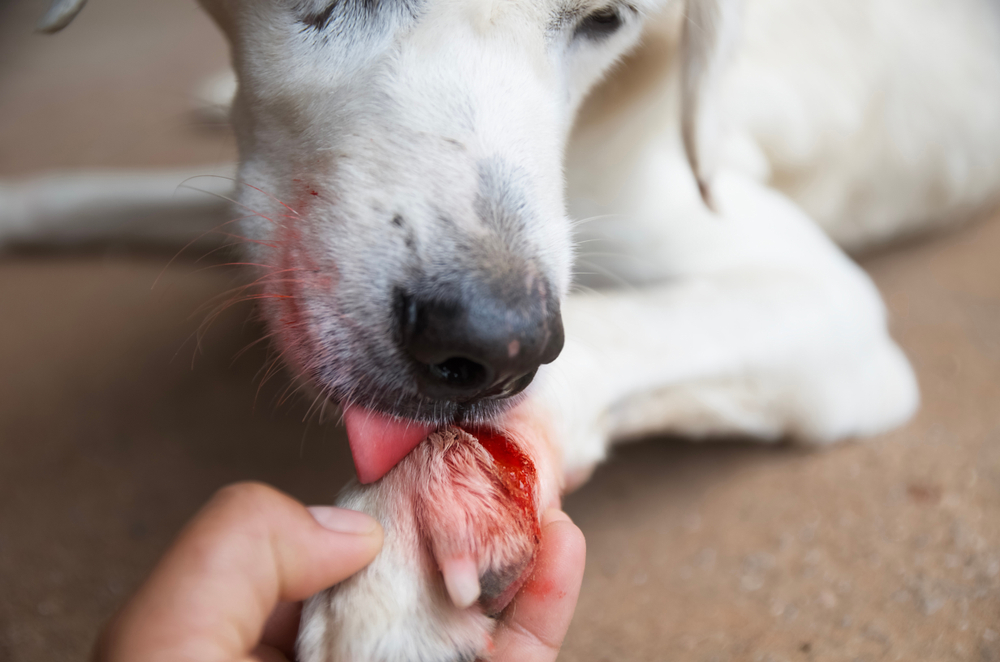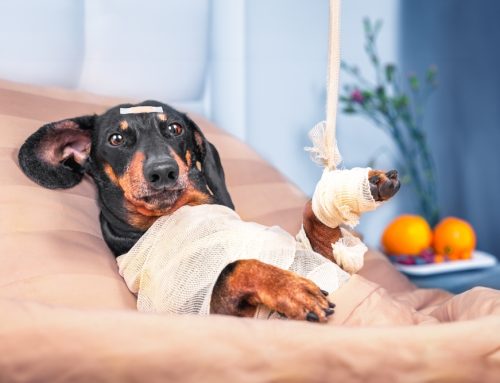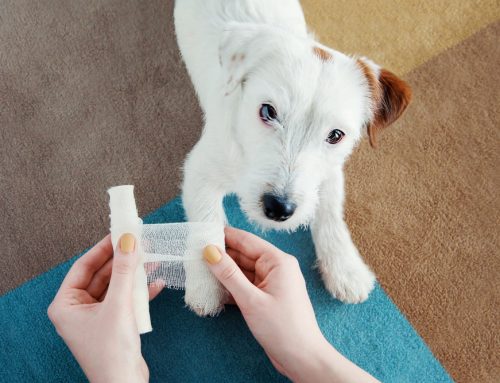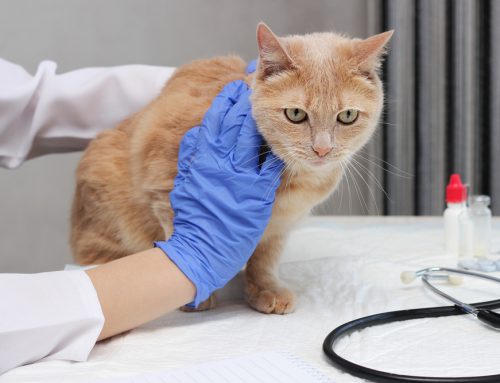“The sound of screeching tires sent me running to the front yard. The thing I dreaded most had happened. Someone left the door open, and our puppy darted into the street.”
The team at Town & Country Animal Hospital knows that you naturally feel upset when your pet needs urgent care. But if you are prepared, you can help your pet at the scene, when minutes count. Read on to learn about five aspects of pet first aid, in order of priority—assess pet ABCs, provide pet CPR, address pet bleeding, place pet bandaging, and transport your pet safely. If you act instead of react, and remember first things first, you can calmly provide the help your pet needs.
An important note—you cannot take care of your pet if you are injured, and a stressed or painful pet may reflexively bite. Therefore, the most important rule of first aid is to muzzle your injured, painful, or disoriented pet. However, never muzzle a vomiting pet. Keep the correct size basket muzzle on hand at all times, but a strip of cloth tied snugly, but not too tightly, over your pet’s muzzle will serve equally well. Always remember that you can call our hospital for input at any point in the pet first aid process.
First: Assess pet ABCs
ABC is an easy mnemonic to remember three key things you should check in a pet emergency.
- A is for Airway — If your pet is unconscious (i.e., non-responsive) and lying on their side, extend the head and neck to open the airway.
- B is for Breathing — To check for breathing, listen closely for breath sounds and watch the chest and belly for the rise and fall of breathing.
- C is for Cardiovascular — Assess for a heartbeat by placing your ear close to the chest and listening. In small pets, you may be able to feel the heartbeat through the chest wall. Lift the lip of your muzzled pet. The gums should be pink. Pale, white, gray, or blue gums indicate a problem.
Second: Provide pet CPR
You may need to provide CPR if your pet has collapsed and is not responsive. Begin immediately if your pet is not breathing and you cannot detect a heartbeat. Perform 30 chest compressions at a rate of 100 per minute, placing both hands over your pet’s heart, and compressing their chest one half its width. Give two rescue breaths by extending your pet’s neck, holding their mouth closed, and exhaling into their nostrils. Stop to check for breathing and a heartbeat every two minutes. Continue CPR until your pet begins to breathe, or until you arrive at our animal hospital.
Third: Address pet bleeding
External bleeding is easy to spot, and the injury, such as a laceration or puncture wound, is often evident. After your pet is muzzled, apply pressure to the wound with your hand for three minutes before checking to see if the bleeding has stopped. If the bleeding is severe, you may need to apply a tourniquet, which can be made from a strip of cloth, above the wound. Remember the 20/20 rule, and loosen the tourniquet for 20 seconds every 20 minutes.
Internal bleeding is more difficult to detect. Pale gums, labored breathing, and abdominal enlargement are all signs of internal bleeding. Other signs include weakness, and bleeding from the mouth, nose, or rectum. Keep your pet calm, call us, and transport your pet to us as soon as possible.
Fourth: Place pet bandaging
Be prepared for emergencies by keeping a pet first aid kit easily accessible. If your pet has a body wound, applying a non-stick pad attached with bandage tape will keep your pet more comfortable, protect the wound from further injury, and help keep the wound clean. If they have an open leg wound, place a non-stick bandage pad over the wound, and place a soft padded bandage (e.g., quilt batting, a towel) around the limb. Use adhesive tape or Vet Wrap to secure the bandage. If you suspect your pet has a fracture, carefully transfer them onto a flat surface such as a pet carrier or a board, and then place a bandage to stabilize the break.
Fifth: Transport your pet safely

Once you have assessed the situation, addressed the bleeding, and applied bandages, it’s time to transport your pet to our hospital. Call our hospital for input before attempting to move your pet. Stop if they become agitated. Confine your pet to a small space, such as a carrier, or create a makeshift stretcher from a piece of wood or other rigid object for transport, especially if you suspect a back injury. To calm your pet and prevent heat loss, cover their body and head with a blanket, taking care not to block their breathing.
With the Town & Country Animal Hospital team, you have the power to help your pet when emergencies arise. Call us to learn about our urgent care protocols, and to learn more about providing first aid to your pet. When you act instead of react, remember first things first, and follow our prioritized list, you will be prepared to help your pet when they need you most.







Leave A Comment